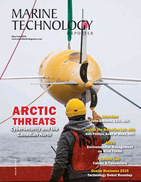Some coral reefs are thriving and scientists say they may guide efforts to curb threats such as over-fishing and climate change which are blamed for widespread global declines.
A major study identified 15 "bright spots" among more than 2,500 coral reefs in 46 nations, including off Indonesia, the Solomon islands and Kiribati where given local stresses there were far more fish than predicted.
And the Great Barrier Reef off Australia, the world's biggest, was performing in line with expectations given its remoteness and high level of protection, lead author Joshua Cinner, a professor at James Cook University in Australia, told Reuters of the study published on Wednesday in Nature.
Australian Prime Minister Malcolm Turnbull, facing a tight re-election battle, on Monday pledged an A$1 billion ($740 million) fund for the reef, which scientists say is suffering widespread coral bleaching due to climate change.
The report found that in many coral reef bright spots, local people depended heavily on reefs for food and took part in owning and managing fish stocks, while many also had deep waters near the reefs that fish could use as a refuge.
"People invest in creative solutions when their livelihoods depend on it," Cinner said.
The study also identified 35 "dark spots", from Jamaica to Tanzania, where there were fewer fish than expected.
In many, fishermen used nets that could snag and damage reefs. They also had access to freezers, which gave an incentive to catch and store extra fish, depleting stocks.
Another factor was that reefs with dark spots had recently suffered an environmental shock, such as from a cyclone or from a rise in water temperatures that can bleach reefs.
"We can learn things from the bright spots about what to encourage," co-author Professor Nicholas Graham of Lancaster University told Reuters.
The authors stressed that bright spots were not those with most fish, but were outperforming expectations judged against baselines such as the size of local populations, tourism, and whether or not reefs were in a marine reserve.
Cinner said the study was unable to include all possible factors due to a lack of data, including the battering that reefs get from waves. Reefs with high "wave energy" typically have fewer places for fish to grow and hide.
($1 = 1.3517 Australian dollars)
(By Alister Doyle; Editing by Alexander Smith)
 February 2025
February 2025


